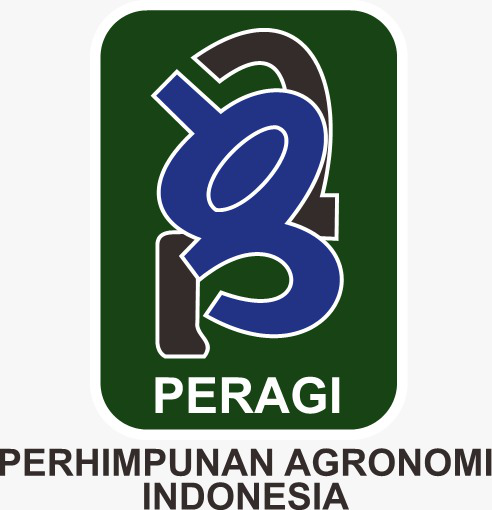The Physical Properties of Soil in Palm Oil Agroforetrial System (Elaeis Guineensis Jacq.) with Aloes (Aquilaria Malacensis Lamk.) and In Palm Oil Monoculture System
Sifat Fisik Tanah Pada Sistem Agroforestri Kelapa Sawit (Elaeis Guineensis Jacq.) dengan Gaharu (Aquilaria Malacensis Lamk.) dan Pada Sistem Monokultur Kelapa Sawit
Abstract
Oil palm cultivation is generally carried out in monoculture. This has an impact on decreasing soil fertility, one of which is the physical properties of the soil. One of solutions that can be done to overcome this is the cultivation of oil palm plants with an agroforestry system. The purpose of this research was to compare the physical properties of soil agroforestry on oil palm (Elaeis gueneensis Jacq.) and aloes (Aquilaria malacensis Lamk.) with oil palm in monoculture. This research was conducted in Bukit Kemuning Village, Tapung Hulu District, Kampar Regency for 4 months from November – Februari 2020. Determination research the locations for agroforestry system and monoculture system using purposive sampling method. Soil samples were taken from 4 sampling point: palm circle, leaf frond piles, harvest path and aloes circle which were repeated 6 times on each land. The observation parameters are several soil physical properties (topsoil depth, bulk density, particle density, total pore space, moisture content, water holding capacity, permeability, infiltration, and soil resistance) and soil C-organic. Data from the observations of each parameter were analyzed statistically using the t test. The results showed that the agroforestry system increased C-organic content and improved selected soil physical properties (increase topsoil depth, total pore space, moisture content, water holding capacity, permeability, infiltration and decrease bulk density, particle density and soil resistance).
Downloads
References
Badrun, Y. dan Mubarak. 2010. Dampak Industri Perkebunan Kelapa Sawit Terhadap Lingkungan Global. Pusat Penelitian Lingkungan Hidup Universitas Riau. Pekanbaru,
Danielsen, F., H. Beukema, N. D. Burgess, F. Parish, C. A. Brühl, P. F. Donald, D. Murdiyarso, B. Phalan, L. Reijnders, M. Struebig, E. B. Fitzherbert. 2009. Biofuel plantations on forested lands: double jeopardy for biodiversity and climate. Conserv Biol. Volume 23 Nomor 2 : 348-358.
Hanafiah, K, A, 2005, Dasar-Dasar Ilmu Tanah, Grafindo Persada. Jakarta.
Herman, A. F. dan I. Las. 2009. Analisis finansial dan keuntungan yang hilang dari pengurangan emisi karbon dioksida pada perkebunan kelapa sawit. Jurnal Litbang Pertanian. Volume 28 Nomor 4, Halaman 127-133. Lembaga Riset Perkebunan Indonesia, Bogor
Heriansyah, P. (2019). Multiplikasi Embrio Somatis Tanaman Anggrek (Dendrobium sp) Dengan Pemberian Kinetin Dan Sukrosa Secara In-Vitro. Jurnal Ilmiah Pertanian, 15(2).
Heriansyah, P. (2020). Rahasia Mudah Menguasai Kultur Jaringan Tanaman: Teori dan Praktiknya. Penerbit Lindan Bestari.
Heriansyah, P., Seprido, S., & Andriani, D. (2020). Identifikasi Anggrek Alam Pada Kawasan Rawan Gangguan Di Suaka Marga Satwa Bukit Rimbang Dan Bukit Baling Resort Kuantan Singingi. Agro Bali: Agricultural Journal, 3(2), 164-170.
Lapadjati, K. K., Wardah, Rahmawati. 2016. Sifat Fisik Tanah Pada Hutan Tanaman Kemiri, Lahan Agroforestri Dan Lahan Hutan Sekunder Di Desa Labuan Kungguma Kabupaten Donggala Sulawesi Tengah. Jurnal Warta Rimba. Vol. 4 No. 2 , Palu.
Madjid, 2010. Dasar Dasar Ilmu Tanah. Fakultas Pertanian. Unsuri.
Maysarah dan Nelvia. 2018. Sifat Fisika Tanah Perkebunan Kelapa Sawit (Elaeisguineensisjacq.) Setelah Diaplikasi Tandan Kosong Kelapa Sawit Dan Limbah Cair Pabrik Kelapa Sawit. Jurnal Dinamika Pertanian Volume XXXIV Nomor 1 (27–34).
Marieta. 2011. Karakteristik Sifat Fisik dan Hidrologi Tanah pada Berbagai Penggunaan Lahan: Studi Kasus di Desa Cimulang, Kecamatan Rancabungur, Kabupaten Bogor, Jawa Barat. Skirpsi. Bogor: Institut Pertanian Bogor.
Muhdi. 2004. Kerusakan Fisik Lingkungan Akibat Penyaradan Dengan Sistem Mekanis. Skripsi Ilmu Kehutanan Fakultas Pertanian Universitas Sumatera Utara, Medan.
Nurmegawati. 2011. Infiltrasi pada hutan Di Sub Das Sumani Bagian Hulu Kayu Aro Kabupaten Solok. Jurnal Hidrolitan, Vol 2 : 2 : 87-95, 2011.
Pandjaitan, Fany Juliarti. 2013. Sifat Fisika Ultisol Di Bawah Tegakan Kelapa Sawit (Elaeis Giuneensis Jacq.) Yang Berbeda Umur Dan Kaitannya Dengan Pemadatan Tanah. Agroteknologi. Universitas Riau. Riau
Sumarni, N., Hidayat, A., dan Sumiati, E., 2006. Pengaruh Tanaman Penutup Tanah dan Mulsa Organik terhadap Produksi Cabai dan Erosi Tanah. Jurnal Hortikultura., Vol 16(3):197–201.
Young, R. A. 1997. Comparison of Four Agroforestry System with Crop Monoculture. Agroforestry of Soil Management. CAB International and ICRAF. Wallingford.
Suharti S, Pratiwi E, Santoso, Turjaman M. 2011. Feasibility of gaharu inoculation business at different stem diameter and period of inoculation. p 41-58. Proceding of Gaharu wokshop: Bioinduction technology for sustainable development and conservation of gaharu. Forestry Research and Development Agency (FORDA). Bogor.
Authors who publish with Jurnal Agronomi Tanaman Tropika (JUATIKA) agree to the following terms:
Authors retain copyright and grant the Jurnal Agronomi Tanaman Tropika (JUATIKA) right of first publication with the work simultaneously licensed under a Creative Commons Attribution License (CC BY 4.0) that allows others to share (copy and redistribute the material in any medium or format) and adapt (remix, transform, and build upon the material for any purpose, even commercially) with an acknowledgment of the work's authorship and initial publication in Jurnal Agronomi Tanaman Tropika (JUATIKA).
Authors are able to enter into separate, additional contractual arrangements for the non-exclusive distribution of the journal's published version of the work (e.g., post it to an institutional repository or publish it in a book), with an acknowledgment of its initial publication in Jurnal Agronomi Tanaman Tropika (JUATIKA). Authors are permitted and encouraged to post their work online (e.g., in institutional repositories or on their website) prior to and during the submission process, as it can lead to productive exchanges, as well as earlier and greater citation of published work.







 More Information
More Information



